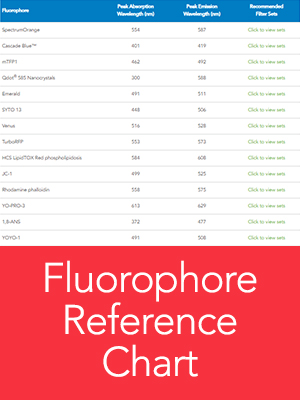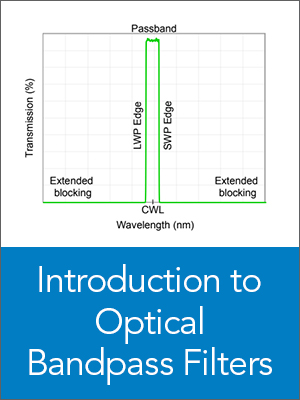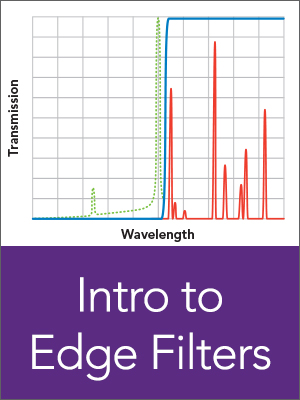
Introduction to Optical Filters
What are optical filters?
Optical filters are devices that selectively transmit, reflect, or block light of different wavelengths. Researchers use them in a wide variety of applications, including fluorescence microscopy, Raman spectroscopy, and medical imaging. Typically, optical filters are made of glass or plastic, and they can be coated with a variety of materials to achieve the desired filtering effect.
Semrock specializes in thin film filter technology, which you can learn more about here.
Looking for more information about our custom optical filter capabilities? Contact us today.
Types of Optical Filters
While many filter types exist, including widely used, off-the-shelf varieties and custom optical filters designed for specific applications, each filter offers unique properties to exert precise control over the light passing through it. Some of the most common types include:
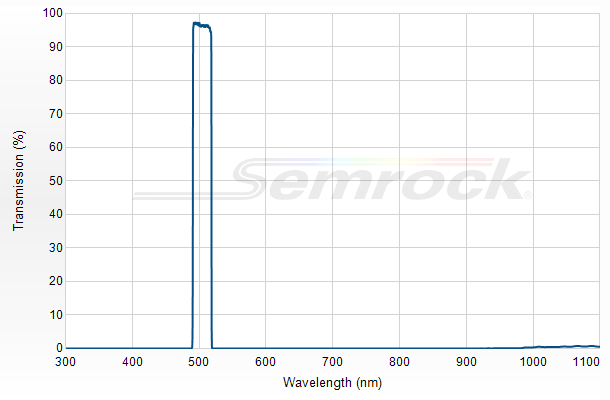
Optical Bandpass filter: Transmits a specific range of wavelengths, while blocking other wavelengths.
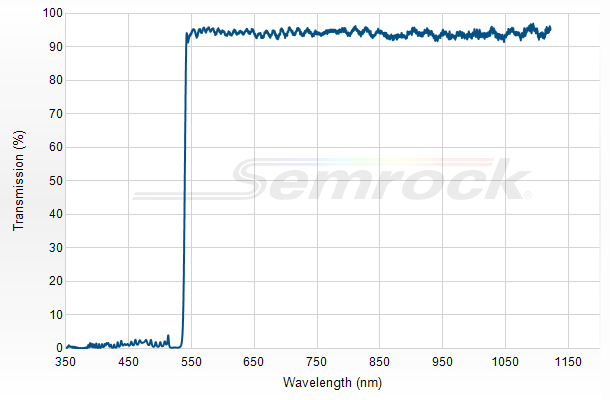
Dichroic beamsplitter: Splits a beam of light into two beams with different wavelengths.

Notch filter: Transmits all wavelengths of light but blocks a narrow range of wavelengths.

Edge filter: Transmits wavelengths of light longer or shorter than the edge wavelength.
Optical filters are an essential part of optical systems used in many different fields. They are key components that enable doctors, scientists, and engineers to study the world around them in more detail and to create devices that can help study and diagnose diseases.
What are optical filters used for?
Optical filters are used in a wide variety of applications, including:
- Fluorescence microscopy: Fluorescence allows us to distinguish different types of tissues with colors, and microscopy allows you to magnify the image so that you can see the detail that you need.
- Medical testing and imaging: A wide range of optical devices are used for PCR testing (e.g. COVID-19 tests), cancer screening, DNA sequencing, wearable medical sensors, and many other purposes. Optical filters are key components that enable the correct functioning of these devices.
- Optical spectroscopy: Scientists can identify the chemical composition of materials using optical spectrometers, in which optical filters isolate specific wavelengths of light for analysis.
- Industrial applications: Optical filters are used in industrial applications, such as machine vision and quality control, to detect defects in products or to identify objects.

Featured Resources
How do optical filters work?
There are two main types of optical filters: absorptive filters and interference filters.
Absorptive filters absorb certain wavelengths of light and transmit others. They are made from colored glass or synthetic colored gels that absorb the undesired wavelengths of light.
Optical interference filters employ the interference of light waves to selectively transmit or reflect certain wavelengths of light. The filter is coated with dozens to hundreds of thin layers of material with different refractive indices. The thicknesses of the layers are carefully controlled so that the desired wavelengths of light interfere constructively and are transmitted, while undesired wavelengths interfere destructively and are reflected, or blocked. Semrock specializes in innovating, designing, and producing high-performance thin film optical interference filters.
Use of a specific type of optical filter depends on the application. For example, a bandpass filter might be used to measure only the intensity of a specific color in an image of a living cell, while a notch filter might be used to remove unwanted noise from a medical image.
How to clean optical filters?
Watch this video below to learn how to properly clean optical filters. For more information, visit our resource page.
Why are optical filters used?
Optical filters are used for a variety of reasons, including:
- To isolate specific wavelengths of light: Optical filters are frequently used to isolate specific wavelengths of light for data collection and analysis, for example in fluorescence microscopy.
- To improve signal-to-background in images: Optical filters are used to prevent undesired light from reaching a detector (such as a camera).
- To enhance the visibility of objects: Optical filters can be used to enhance the visibility of objects, such as stars or planets. This is useful in astronomy, where scientists use filters to study faint objects or to observe objects that are otherwise obscured by the atmosphere.
- To protect the eyes from harmful radiation: Optical filters are used to protect the eyes from harmful radiation, such as ultraviolet light. This is important for people who work with lasers or who are exposed to sunlight for long periods of time.
Where to buy catalog or custom optical filters?
Visit our webstore by clicking one of the following categories below.



